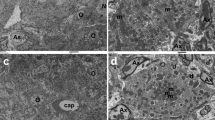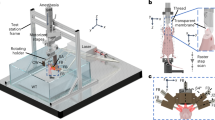Abstract
Intraperitoneal injection is a common technique that safely delivers a substance into the peritoneal cavity but can induce high stress in animals. The authors have developed a new method for administering intraperitoneal injections in mice, with the goal of causing less stress during handling and injection. Here, they compare their novel technique with a conventional technique in three experiments. In the first experiment, the authors administered intraperitoneal injections of contrast medium using either technique and then used micro-computed tomography to evaluate the placement and retention of the medium. In the second and third experiments, the authors administered intraperitoneal injections or control treatments, then sampled blood to determine circulating concentrations of stress-related hormones. Imaging showed that both the novel and the conventional techniques properly delivered a contrast medium into the peritoneal cavity. The novel technique was also associated with lower concentrations of stress-related hormones than was the conventional technique. These results indicate that this novel technique might be beneficial to investigators that use intraperitoneal injections with mice.
This is a preview of subscription content, access via your institution
Access options
Subscribe to this journal
We are sorry, but there is no personal subscription option available for your country.
Buy this article
- Purchase on Springer Link
- Instant access to full article PDF
Prices may be subject to local taxes which are calculated during checkout




Similar content being viewed by others
References
Ohta, Y. et al. Preventive effect of teprenone on acute gastric mucosal lesion progression in compound 48/80-treated rats. Eur. J. Pharmacol. 487, 223–232 (2004).
Sørensen, D.R., Leirdai, M. & Sioud, M. Gene silencing by systemic delivery of synthetic siRNAs in adult mice. J. Mol. Biol. 327, 761–766 (2003).
Zhang, Y. et al. Intraperitoneal injection of cigarette smoke extract induced emphysema, and injury of cardiac and skeletal muscles in BALB/C mice. Exp. Lung Res. 39, 18–31 (2013).
Miner, N.A., Koehler, J. & Greenaway, L. Intraperitoneal injection of mice. Appl. Microbial. 17, 250–251 (1969).
Drude, S. et al. Side effects of control treatment can conceal experimental data when studying stress responses to injection and psychological stress in mice. Lab Anim. (NY) 40, 119–128 (2011).
Meijer, M.K., Spruijt, B.M., van Zutphen, L.F. & Baumans, V. Effect of restraint and injection methods on heart rate and body temperature in mice. Lab. Anim. 40, 382–391 (2006).
Carroll, B.J. et al. Pathophysiology of hypercortisolism in depression. Acta Psychiatr. Scand. Suppl. 433, 90–103 (2007).
Reynolds, R.M. Corticosteroid-mediated programming and the pathogenesis of obesity and diabetes. J. Steroid Biochem. Mol. Biol. 122, 3–9 (2010).
Wirtz, P.H. et al. Evidence for altered hypothalamus-pituitary-adrenal axis functioning in systemic hypertension: blunted cortisol response to awakening and lower negative feedback sensitivity. Psychoneuroendocrinology 32, 430–436 (2007).
Kumsta, R., Entringer, S., Hellhammer, D.H. & Wüst, S. Cortisol and ACTH responses to psychosocial stress are modulated by corticosteroid binding globulin levels. Psychoneuroendocrinology 32, 1153–1157 (2007).
Vahl, T.P. et al. Comparative analysis of ACTH and corticosterone sampling methods in rats. Am. J. Physiol. Endocrinol. Metab. 289, E823–E828 (2005).
Fortin, M.C. et al. Increased lead biomarker levels are associated with changes in hormonal response to stress in occupationally exposed male participants. Environ. Health. Perspect. 120, 278–283 (2012).
Kramer, K. et al. Effect of conditioning on the increase of heart rate and body temperature provoked by handling in the mouse. Altern. Lab. Anim. 32, 177–181 (2004).
Rybkin, I.I. et al. Effect of restraint stress on food intake and body weight is determined by time of day. Am. J. Physiol. 273, 1612–1622 (1997).
Poole, T. Happy animals make good science. Lab. Anim. 31, 116–124 (1997).
Acknowledgements
This study was supported by a grant from the Korean Health Technology R&D Project, Ministry of Health & Welfare, Korea (HI12C0110).
Author information
Authors and Affiliations
Corresponding authors
Ethics declarations
Competing interests
The authors declare no competing financial interests.
Rights and permissions
About this article
Cite this article
Baek, J., Kwak, S., Kim, JY. et al. Evaluation of a novel technique for intraperitoneal injections in mice. Lab Anim 44, 440–444 (2015). https://doi.org/10.1038/laban.880
Received:
Accepted:
Published:
Issue Date:
DOI: https://doi.org/10.1038/laban.880
This article is cited by
-
Considering the risks and safety of intraperitoneal injections
Lab Animal (2016)



